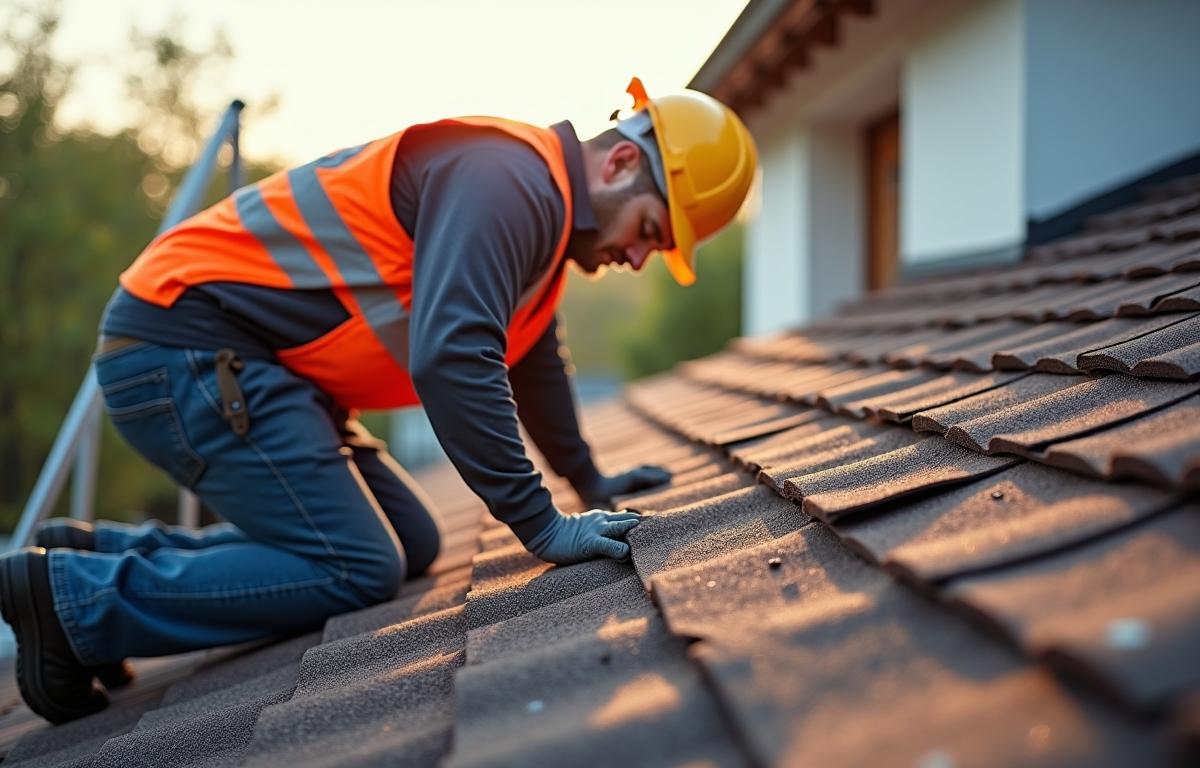Roof maintenance and repair might seem manageable for many homeowners or workers comfortable with tools and ladders. Whether it’s patching leaks, installing shingles, or inspecting damage, climbing onto a roof is often viewed as a straightforward task. Yet the truth is far more serious.
Without the right safety measures, roof work can lead to devastating injuries or even death. The combination of heights, steep angles, unpredictable surfaces, and environmental exposure makes it one of the most hazardous types of labor.
The Risk of Falls Is Always Present
Falls from roofs account for a significant portion of construction-related injuries each year. According to the U.S. Occupational Safety and Health Administration (OSHA), falls are the leading cause of fatalities in the construction industry. Even experienced professionals are not immune to accidents, especially when working on slick, unstable, or uneven roof surfaces.
One misstep can lead to a fall that results in broken bones, spinal damage, or traumatic head injuries. Some falls occur due to loss of balance, while others happen because of structural failure in the roof itself. Wind gusts and wet surfaces increase the likelihood of slipping. A fall from even a one-story structure can cause life-changing injuries, making it critical to always secure footing and use fall protection systems.
Lack of Safety Gear Increases Injury Severity
Plenty of accidents are made worse simply because the person wasn’t wearing the proper safety gear. Helmets, harnesses, non-slip shoes, and guardrails are a minimum requirement for roof work. Without a helmet, a fall can result in severe head trauma. Without a harness or anchor system, there’s no barrier between a slight stumble and a ten-foot drop.
Even basic gear like gloves and protective eyewear matters. Sharp shingles, exposed nails, or debris can cause cuts, eye injuries, and infections. These risks multiply when workers use tools like nail guns, saws, or grinders at height. Personal protective equipment isn’t just a safety bonus; it’s the difference between walking away and being carried off-site.
Inadequate Fall Prevention Systems
While larger job sites are often equipped with harnesses, lifelines, and scaffolding, individuals working on homes may not have access to the same systems. This lack of infrastructure increases the likelihood of dangerous improvisation, using a basic ladder where scaffolding is needed, or walking on slick roofing tiles without tethers.
Some companies now specialize in affordable, accessible safety equipment for individual contractors or homeowners tackling their own repairs. And, at https://sling-smarter.com/ and similar websites, you can learn more about the safety solutions professionals offer, which are designed to improve personal protection during elevated work. Their approach to user-friendly harnesses and support systems helps reduce accidents for those working on rooftops with minimal setup.
Using professionally designed safety equipment ensures better anchoring and minimizes risks from unpredictable roof materials. It’s never wise to assume that a project is too small to require real fall protection. Even a minor repair job can take a sudden turn if safeguards are missing.
Weather Compounds Every Hazard
Working in poor weather conditions makes roof tasks even more dangerous. Rain creates slick surfaces, while snow and ice add an unpredictable layer of slipperiness. Direct sun exposure can heat roofing materials, increasing the risk of burns or heat exhaustion. Wind can destabilize ladders, unbalance workers, and blow loose materials across the roof.
Failing to account for weather can turn a simple job into a serious hazard. That’s why professionals evaluate the forecast and cancel or delay work if conditions pose a threat. Homeowners, in particular, may underestimate how quickly environmental factors can change, putting themselves at greater risk without realizing it.
Inexperience Amplifies Risk
Many people assume that because they’re handy or comfortable on a ladder, they’re capable of handling roofing tasks. This overconfidence is one of the most dangerous attitudes when it comes to safety. Roofing requires a different set of skills and situational awareness than other household repairs.
Professionals are trained to move deliberately, recognize danger zones, and work with equipment designed for rooftops. They know how to assess the integrity of surfaces, adjust for pitch, and manage tools at height. Someone without this experience may misjudge load limits or fail to detect structural weakness until it’s too late.
Tools Can Become Hazards Themselves
Carrying tools up a ladder or across a sloped roof can quickly become dangerous if they’re not secured properly. Dropped tools can injure anyone working below or damage parts of the roof or gutters. Power tools, particularly, present additional dangers if used without grounding or safety controls.
Tool belts, lanyards, and holsters should always be used to keep equipment under control. Leaving tools unattended on a sloped surface invites disaster. One careless moment can turn a loose hammer or drill into a falling projectile. Workers need both hands free to maintain balance and should never carry heavy or awkward gear without assistance or proper storage solutions.
Electrical Hazards and Structural Weaknesses
In many homes, electrical lines run through the attic or near the rooftop. Accidentally striking or disturbing these lines can cause electrocution. Metal ladders or tools create an even higher risk when they come in contact with active wiring. Without knowing the roof’s layout, it’s possible to puncture insulation or wiring hidden beneath the surface.
Structural damage can go unnoticed until it gives way underfoot. A soft spot in the roofing substrate may collapse, dropping a person through to the attic or lower floors. Visual inspections are not always enough. Professionals often use testing tools or core samples to assess integrity before committing their weight to any section of the roof.
Roof work is physically demanding and filled with hidden dangers. Whether you’re replacing a few shingles or conducting a full inspection, safety must come first. Working at height without proper precautions is often life-threatening. Protecting yourself or your team requires the right knowledge, the right gear, and the discipline to never cut corners when lives are on the line.
